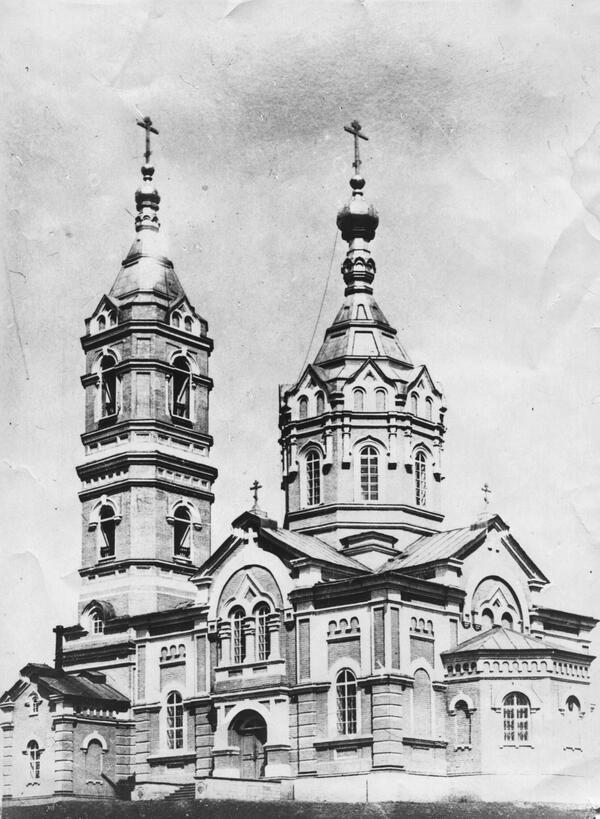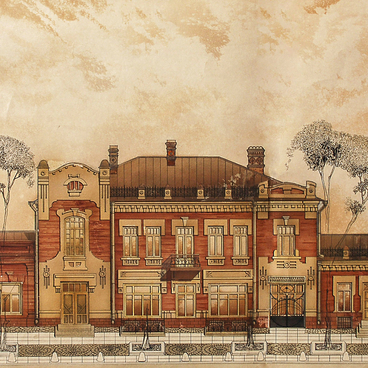Mount Preobrazhenskaya is well-known and is, in itself, a symbol of the city of Orsk. The mountain was named ‘in honor of the Lord’s Transfiguration, occurring on the day Russians first arrived at the mouth of the river Ori, 6 August 1735.’
At the beginning of the 19th century, the Mountain-top church was built of stone and wood, on a foundation of local red-brown sandstone. The use of log-like cladding (clearly visible on Zhukovsky’s 1837 drawing) instilled a Russian Folk style into the building’s architecture.
At the beginning of the 19th century, the Mountain-top church was built of stone and wood, on a foundation of local red-brown sandstone. The use of log-like cladding (clearly visible on Zhukovsky’s 1837 drawing) instilled a Russian Folk style into the building’s architecture.
By the middle of the 19th century, the mountain church was very dilapidated, with large cracks appearing in the stone walls. It was described as ‘completed dilapidated’ as early as 1841. However, before that the church had stood for a long time, with only occasional repairs. Only in 1873 was the decision taken to built a new stone church on the mountain. The construction of this church, however, took a long time to get started.
On 27 July 1888, a large fire finally destroyed the old church and the question about a new church sprung up once again. According to church documentation, this church was ‘under construction’ right until 1903.
On 27 July 1888, a large fire finally destroyed the old church and the question about a new church sprung up once again. According to church documentation, this church was ‘under construction’ right until 1903.
A member of the Imperial Academy of Art, Mikhail Arefievich Shchurupov was the architect of the new church. He is known for his projects in Saint Petersburg (Church of the Exaltation of the Holy Cross and Smolensk Church), Novgorod, Tokyo (Holy Resurrection Cathedral) and on Mount Athos in Greece (Skete of Saint Andrew).
The Nikolsky Church was one of the world-renowned architect’s last projects, with the church opening its doors two years after the architect’s death.
The Nikolsky Church was one of the world-renowned architect’s last projects, with the church opening its doors two years after the architect’s death.




